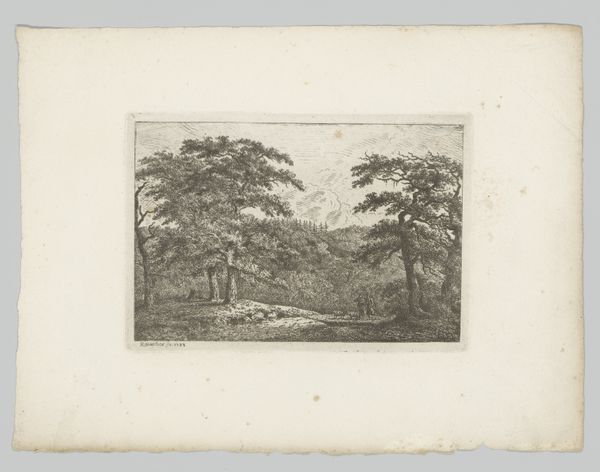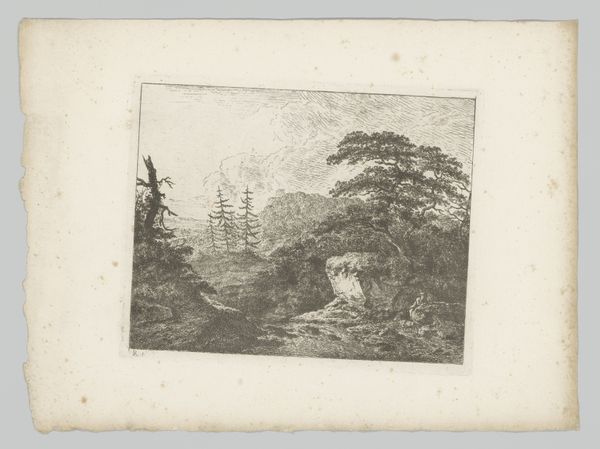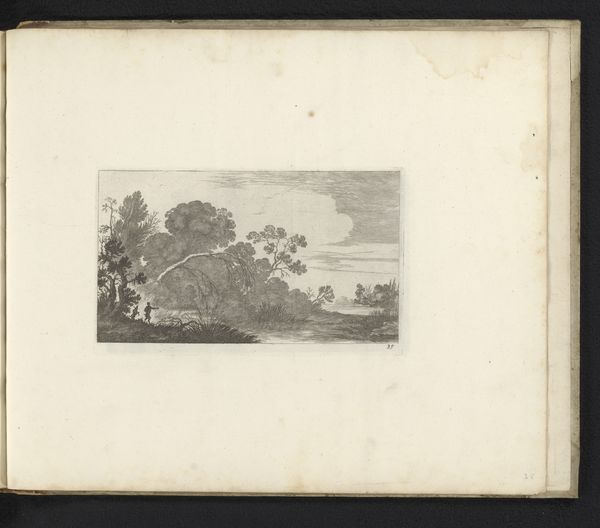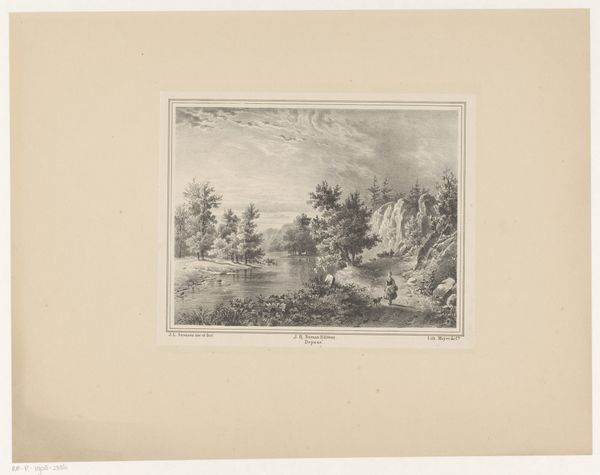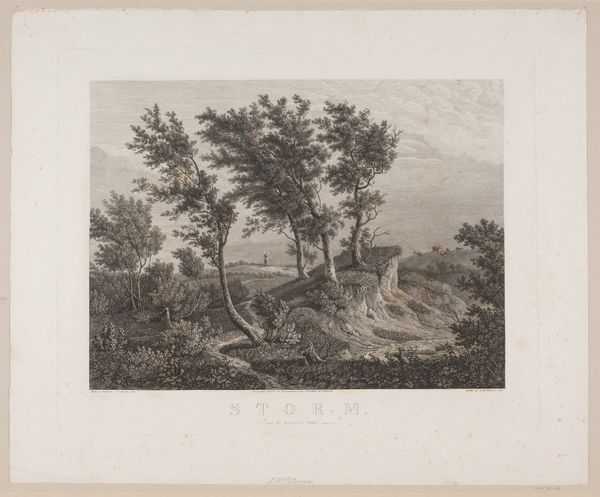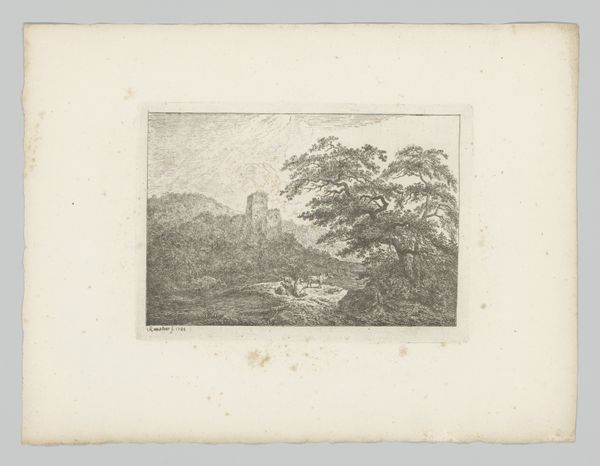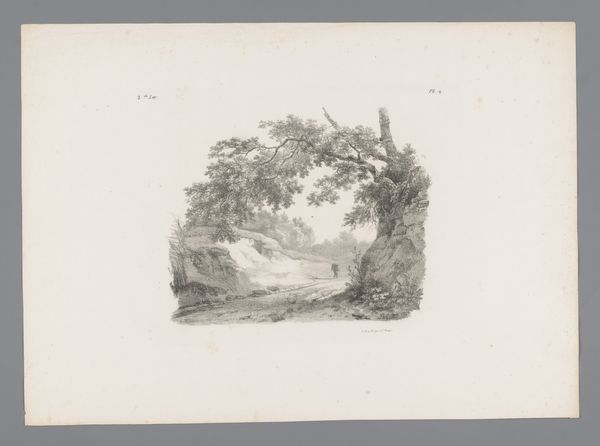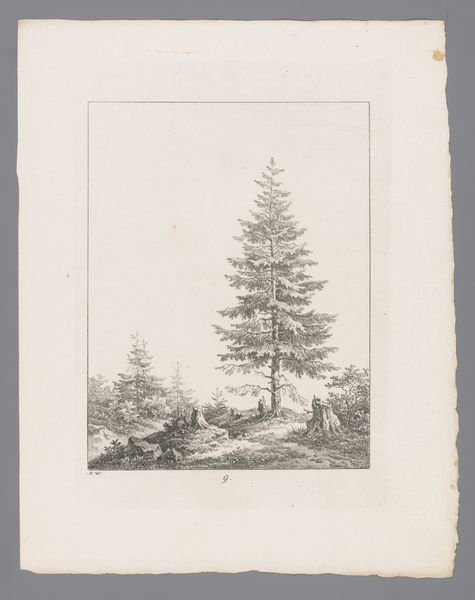
Dimensions: height 130 mm, width 178 mm
Copyright: Rijks Museum: Open Domain
Friedrich Rauscher made this print, “Hilly landscape with two men and two cows,” sometime in the late 18th or early 19th century. It presents an idealised vision of rural life. But what does it tell us about the social and cultural context of its creation? The image itself employs visual codes that evoke a sense of peace and harmony with nature. We see this in the careful arrangement of the landscape, the inclusion of grazing cows, and the presence of figures who appear to be at leisure. Such imagery reflected a growing interest in the natural world and a yearning for simpler times, which was a common theme in European art of this period. Rauscher was working during a time of significant social and political upheaval. The rise of industrialisation, the French Revolution, and the Napoleonic Wars were all reshaping European society. Art historians often use such works as a window into how people perceived their changing world. By researching the artist's life, contemporary writings, and the broader art market, we can better understand the complex interplay between art and society.
Comments
No comments
Be the first to comment and join the conversation on the ultimate creative platform.
